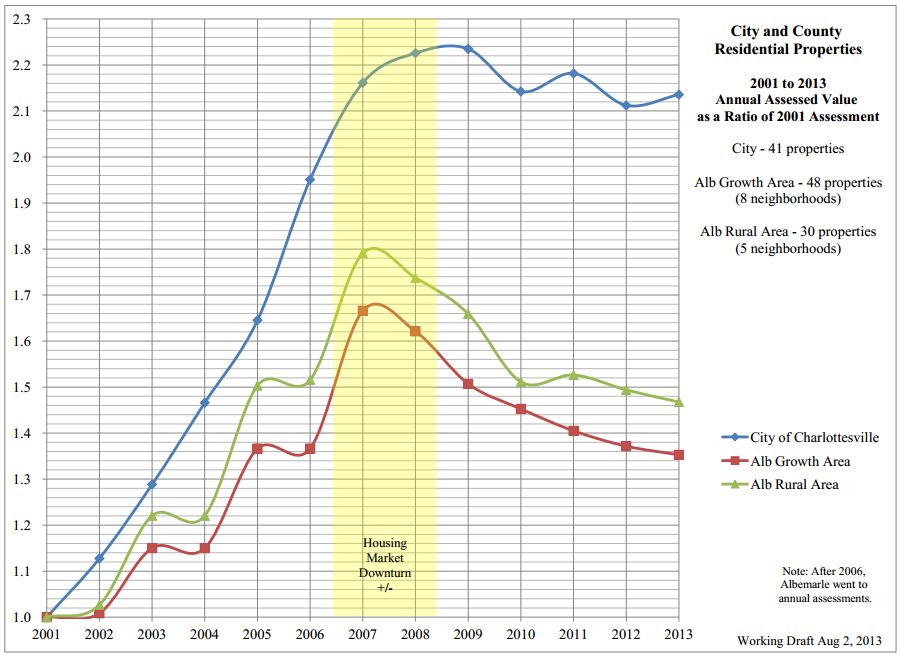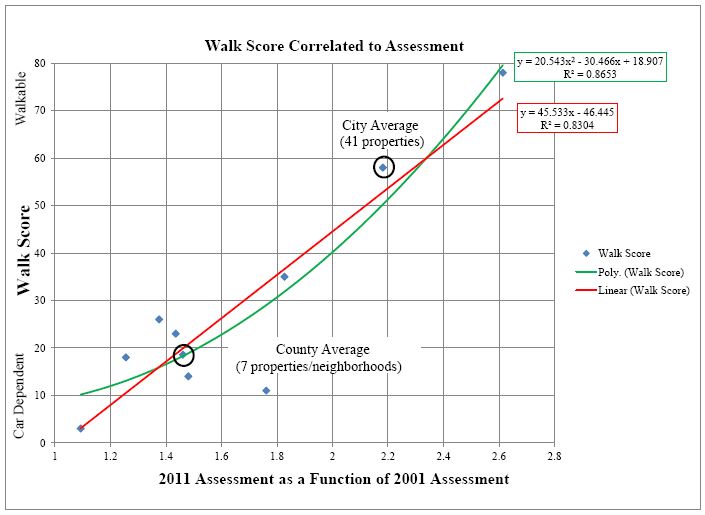by James A. Bacon
Residential real estate assessments in the City of Charlottesville increased far more rapidly during the 2000s-era real estate bubble than assessments in next-door Albemarle County, and then held up better during the housing bust that followed, according to research conducted by Jeff Werner, Albemarle County land use officer for the Piedmont Environmental Council (PEC).
The data, based on a sample of 120 properties, supports the claim made by PEC and other smart-growth groups that people increasingly prefer to live in compact, walkable communities with access to mass transit as opposed to low- density, car-dependent neighborhoods. As a liberal college town with a high smart-growth consciousness, Charlottesville may not be representative of all Virginia communities. But the trend lines support the smart-growth argument for at least one metropolitan region.
How can Werner be so sure that the desire for “walkable” communities is behind the divergence in property assessments? Well, he correlated the percentage change in property assessments over 2001-2011 with their “walk score” and found a tight relationship. (I am not competent to judge his statistical methodology. If others see flaws, please make note in the comments.)
The soaring price for city houses reflects that fact that the city is mostly built out and is adding very little to the region’s stock of “walkable urbanism,” to use the term coined by Christopher Leinberger. Most growth is occurring in Albemarle County, where conventional auto-centric development is taking place. The type of housing built in the county is dictated by the supply side (zoning policy) rather than the demand side (what people actually want). People have no choice but to accept what the distorted marketplace offers in Albemarle or pay elevated prices in Charlottesville.
Many people continue to prefer living in the suburbs. But Werner’s divergent trend lines make it clear that supply-side of “walkable urbanism” housing is severely under-served.




